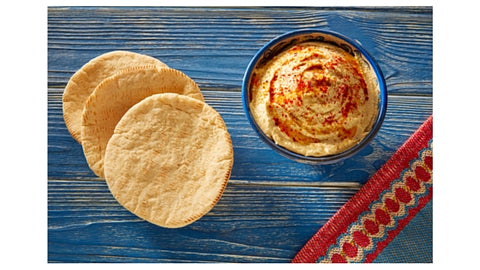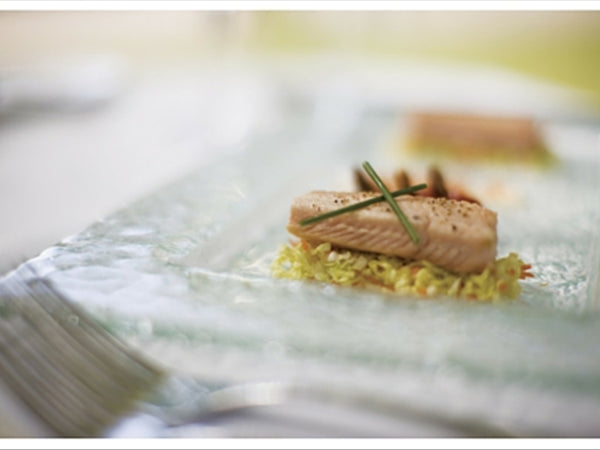After a long day at work, all but the hardiest souls want to slave over a hot stove, and statistics prove this. Eating out is one of America’s favorite pastimes, with people visiting restaurants 61.1 billion times in 2015. Americans are spending more money at restaurants than at grocery stores, too, according to a survey by the NPD Group.
Eating out is fun and relaxing, but it can increase your daily calorie count and drain your pocketbook! Photos of delicious foods on the menu, prodding from friends (or waiters) deter you from eating healthy. With a little practice, you can enjoy restaurant food without gaining weight. Check out these tips on what to eat for maximum health and minimum calories at the restaurant of your choice.

Eat Yogurt or another High-Protein Snack Before Going Out
Eat a healthy, high-protein snack before you leave for the restaurant. Yogurt, peanut butter or a few peanuts are low in calories, and fill you up so you won’t have room for breadsticks or hot fudge sundaes, and you’ll eat less of the entrées, too. Eat small meals throughout the day and you’ll eat better and be more apt to lose weight. You should be doing that anyway even if you’re not eating out.
You don’t need to starve yourself during the day if you’re going to a restaurant for dinner. It will make you light-headed and cause you to eat more and eat faster at the restaurant. This will not only add more calories to your daily total, but it will leave you with indigestion or other problems. Eating in a restaurant should be fun. No pre-meal sacrifices required.
Choose Dishes with Healthy Ingredients
Unless you’re in a Sweet Greens or another healthy, veggie chain, restaurants love to pile on sodium, sauces and creamy sides. The worst offenders are often pasta dishes full of cheese and heavy sauces.
Order grilled, roasted, steamed or baked entrees. The more prevalent fried, creamy buttery and sauteed menu choices boost fat, salt and calories to an unhealthy level. Ask your server if the dish can be prepared differently. Most restaurants will gladly accommodate you.
Wondering what your favorite cuisine has to offer, health wise? Greek, Japanese, Indian, and, of course, vegan and vegetarian restaurants provide the best bets for calorie-conscious diners, but all cuisines offer healthy choices.
Here are some tips on eating well at various ethnic restaurants.

Chinese
At a Chinese restaurant, order steamed foods and brown rice instead of white rice. Choose a main entrée with veggies and keep sauces on the side. Stay away from high-calorie items like Orange Beef (1500 calories) and Lemon Chicken (1400 calories). Szechwan shrimp uses chicken stock for a low-calorie alternative.
Stir-fries have the most fat and oil – up to 56 grams fat. Check out some low calorie options here. At the Mongolian barbecue, ask for a Mongolian hot pot. A pot of broth placed in the center of the table. Meat, fish, mushrooms, green veggies and dumplings are placed in the pot and cooked at the table.

Thai
Thai restaurant dishes generally use lots of spices, including cayenne pepper and turmeric. These spices have fat-burning and anti-inflammatory agents to keep you slim and healthy.
Coconut milk and other ingredients can pack on the pounds. Curries typically contain coconut milk, but you can substitute broth instead.
Try Pik Pow, a fat-free chili dish, and avoid extra sauce. Steamed mussels are high in protein and low in fat, Remember, it’s the sauces and cooking method makes the difference, not the content of raw food. Thai salads are loaded with tomatoes, scallions mushrooms and shrimp, without oil or creamy dressings.

Italian
Italian food is healthier than you think. You can enjoy pasta with tomato sauce, gluten-free polenta, grilled calamari or dishes made with lemon-based Piccata sauce. Avoid thick, cheesy sauces, meat lasagna and breaded veal. Order Italian minestrone soup, which is loaded with tomatoes, vegetables and fiber-rich beans, Broccoli Rabe (just nine calories), and end your meal with Macedonia,a fruit salad with mint and lemon juice or fruit ice.
Look for dishes made with tomato sauce, eggplant (without mozzarella topping), olive oil, lemon, garlic, oregano, parsley or basil. Garlic lowers blood pressure and offers anti-inflammatory benefits and can reduce cold symptoms and hasten healing. Bacteria-fighting basil is loaded with Vitamin K for better bone health and blood clotting, and 100 grams of antioxidant-rich olive oil has 72% of the RDA of Vitamin E and 72% of the RDA of monounsatured fats.
The cancer fighting lycopene in tomatoes and tomato sauce also helps fight heart disease and premature aging. Enjoy a small plate of spaghetti and meatballs. It’s healthier than creamy, buttery pasta Alfredo.

Greek and Mediterranean
Greek food is considered the healthiest ethnic cuisine. This is no surprise, since it’s based on the Mediterranean diet, which emphasizes vegetables, fruits, fish, nuts, olive oil and legumes. Eggs, yogurt, poultry and cheese are used in moderation, with red meat appearing less often. A study conducted by the New England Journal of Medicine showed high-risk subjects could reduce their chance of heart attacks by 30% by changing to a Mediterranean diet.
Stay slim by ordering grilled fish with vegetables (410 calories), a steak Kabob with grilled veggies (290 calories) or a pita with hummus (160 calories). Avoid creamy dressings, butter laden spinach pie and limit consumption of feta cheese. Roast half chicken with garlic dressing is another heart-healthy choice, as long as you order breast meat and leave the crispy skin on your plate.

Indian
Indian food, like Thai food, is big on antioxidant-rich spices. Turmeric, red chili peppers, cumin, ginger and garam masala, (a combination of black pepper, cumin and other spices), figure prominently in most Indian dishes. Lentils, another common ingredient in Indian recipes, boast a high fiber and magnesium content, and may help lower cholesterol. Vegetable curry with dal, a spicy porridge made from lentils, and Tandoori chicken, roasted chicken made with yogurt, paprika, garlic, ginger, coriander and other spices, are high in nutrients and low in calories. A piece of Tandoori chicken ranges anywhere from 177 to 227 calories per piece, depending on how it’s prepared.
Mexican
Avoid waist expanding sour cream, guacamole and pre-meal chips. Instead, order ceviche of raw fish or Mexican shrimp appetizer in garlic sauce – or try Veracruz, a traditional Mexican sauce made with tomatoes, onions and fat-burning chili peppers. Avoid chimichangas and anything fried or crispy, like tostadas and taquitos or share orders with friends.
You don’t need to skip alcohol with your Mexican food if you want to lose weight. Ask for a margarita without a salted rim, or drink light Mexican beer or a glass of wine. Choose unsweetened ice tea if you want to avoid alcohol altogether.
American Diners
At a family diner, choose from the “healthy” or “low-calorie” portion of the menu, or avoid red flag words like fried and creamy when ordering. Ask your server if the cook can add cayenne pepper, garlic, black pepper or turmeric to baked potatoes or soups.This improves taste and nutrition. Order yogurt-based dishes instead of sweets for breakfast or dessert. Yogurt fills you up, making it less likely that you’ll exceed your calorie limit for the day.
Eat conservatively by sampling small amounts of high-calorie dishes with friends. Avoid the “just one more bite” trap, though. You really have to pace yourself to do this and not succumb to old habits.
Japanese
Just about anything in a Japanese restaurant is good for you and low in calories. Major ingredients used in Japanese food - green tea, tofu, miso soup, seafood, shiitake mushrooms, sushi, and seaweed are all rich in nutrients and help reduce the risk of heart disease and cancer. Order brown rice instead of white rice with meals. White rice can cause a rise in blood sugar.
Study the Menu Online
Chain restaurants and many independent ones include calories and ingredient information on their websites. If you don’t find anything low-cal or nutritious at one restaurant, check out online menus for nearby eateries.
Use balance when ordering. Choose something from each food group, just like you were taught in school. Such choices don’t have to be boring or limiting. At breakfast, choose a fruit (grapefruit or melon), whole grains (whole wheat toast), vegetables and protein/dairy (broccoli omelette), along with a low-calorie cup of herbal tea for an appetizing meal to start your day.
Avoid entrées with red flag words like au gratin, sautéed, fried, buttery and creamy. Go for menu items that are baked, poached, steamed or grilled.
Most restaurants serve large portions (unless you’re in a high end restaurant - the portions seem to get smaller as the price goes up). Eat half the portion and take the other half to go in a container, or share your meal.
Don't drown sandwiches in mayonnaise.It’s often the condiments that make or break the calorie count. Hold the mayo and use mustard, dill pickle relish or garlic-rich Siracha Hot Chili Sauce.
When taking your children out to eat, choose restaurants with a kid’s menu. Always include calcium-based foods like milk, chocolate milk and ice cream (minus candy and whipped cream toppings), and substitute fresh-squeezed juice for soda. Substitute fruits, veggies, mashed or baked potatoes for fries, and keep sauces and dressings on the side. Frozen yogurt or smoothies are good dessert options.
When your hungry or preoccupied, you’ll make poor eating choices, and you’ll pay for it with extra weight, high blood pressure, cavities or other problems. If you eat out a lot, take time to learn more about the nutritional content of your favorite foods, and how to make healthy substitutions for high-calorie dishes.
The more you know about food and nutrition the better you’ll be able to balance eating out and maintaining good health.
Customize Your Meal
Ask for fresh veggies on the side instead of fries, or for baked fish instead of fried fish. As long as you’re friendly and not too demanding about it most places are glad to make substitutions for you.

Eat a Salad
A Penn State study shows eating salad at mealtime increases satiety so you won’t be tempted to fill up on desserts or bread sticks.
Instead of spreading your salad dressing all over salad, dip a forkful of lettuce and tomatoes in a side container of dressing that way, you can eat at a more leisurely pace and save calories.

Take it Slow
When you eat fast, you don’t give your body enough time to taste or digest your food properly. You’ll gain weight, won’t enjoy your food and may even get hiccups if you do this too often.
Practice mindful eating by tasting everything instead of scarfing it down. Savor your food. Think of eating as a pleasurable experience. One of the causes of obesity is absent-minded eating – at lunch counter, in front of TVs or computers. Pay full attention to your meal. Put the Smartphone away and eat like Grandma and Grandpa did, slowly, over face to face conversation with friends or relatives.
Make eating out a special event, so you’ll look forward to it. Dress up a little, (no tux or dress needed), but just spruce it up a bit – no flip flops or t-shirts. It will give you a feeling of doing something special.
If you spend more time cooking at home, you’ll save on your weekly food budget (and calories), and may be able to splurge more at restaurants.
Order in stages (drinks first,then appetizers, followed by salad and entrée), instead of ordering all courses at the beginning of your meal, or take smaller bites. Put down your utensils between bites to help you eat less.
A study showed women reduced daily calorie intake by 297 calories with careful choices and mindful eating at restaurants. Despite the large portions and high calorie foods served by most restaurants, you can still loss weight even if you eat out regularly. A University of Texas study looked at ways to curb weight gain while eating out, and the tips included getting part of a meal to go, eating slowly and ordering sauces and gravy on the side.
Skip dessert, unless you can order fruit salad or sherbet, and end your meal with coffee or tea instead of soda.You don’t need to give up eating in restaurants to stay slim, you just need think about what you’re eating and how it affects your health.

Drink Water Before (and During) Your Meal
Ask for water before meals or drink some at home before leaving for the restaurant. H2O fills up up without the sugar and chemical sweeteners in soda, and helps rid your body of toxins. A great double whammy for good health! A study published in the journal Obesity showed that people who drank 17 ounces of water before eating lost 44% more weight than their peers who abstained.
Drinking water is healthier for you than most other beverages, and it has zero calories. If you want a bit more taste without calories, try green tea or herbal tea with your meal.
Order First
When you’re dining out with friends, there’s always a tendency to be influenced by what other people order. Be assertive, and order first. You’ll be less likely to mimic your friends’ food choices.
With a little planning and willpower, you can eat in restaurants regularly and still lose weight (or maintain your current weight). When you learn more about the ingredients in your favorite dishes and order menu items creatively, you can have the best of both worlds.
















